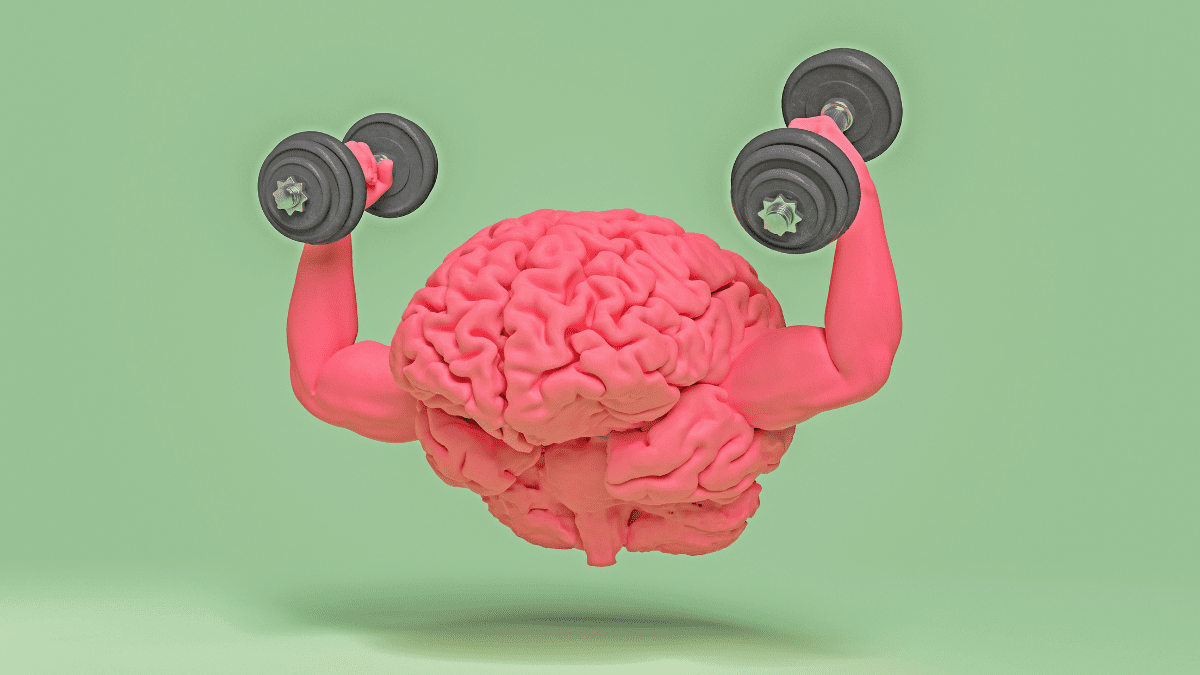Neuroplasticity Exercises: Change Your Brain, Change You Now
Rewire your brain with 10 powerful neuroplasticity exercises that boost memory, enhance focus, and improve mental flexibility. Simple daily habits can reshape your mind and unlock new cognitive potential.

Your brain isn’t fixed; it can change and adapt at any age. This ability, known as neuroplasticity, allows the brain to form new connections. By engaging in specific neuroplasticity exercises, you can enhance focus, boost memory, and overcome negative thought patterns.
Scientists once believed that the brain’s structure was set after childhood. However, recent research indicates that we can rewire our brains throughout our lives. Simple daily habits play a significant role in shaping your mind. The more you challenge your brain, the stronger and more adaptable it becomes.
In this guide, you’ll discover science-backed neuroplasticity exercises designed to improve mental clarity and emotional resilience. Whether your goal is to learn more efficiently, reduce stress, or establish new habits, these techniques can assist you.
For additional insights on how mindfulness can transform your brain and reduce stress, explore our article on Mindfulness and the Brain: The Science of Transformation.
Let’s delve into how you can reshape your mind today.
Neuroplasticity Exercises: How Your Brain Rewires Itself
Your brain is always changing. Every thought, action, and experience reshapes its structure. This ability to adapt is called neuroplasticity. By practicing the right neuroplasticity exercises, you can strengthen brain connections, improve memory, and break negative patterns.
How Neuroplasticity Exercises Rewire the Brain
Neurons form new pathways based on how you use your mind. The more you practice a skill, the stronger these connections become. When you stop using them, they weaken. This is why neuroplasticity exercises are key to long-term brain health.
Why Neuroplasticity Exercises Matter
- Boost learning and memory.
- Help the brain recover from injuries.
- Improve focus, creativity, and emotional resilience.
A study from MIT found that repeated mental training can rewire the brain and enhance cognitive function (MIT News). Research from Johns Hopkins Medicine also shows that engaging in cognitive exercises helps maintain brain plasticity as you age (Johns Hopkins Medicine).
Everyday Neuroplasticity Exercises That Work
- Learn a new skill – strengthens memory and focus.
- Practice mindfulness – improves attention and emotional balance.
- Play an instrument – enhances coordination and brain flexibility.
Your brain isn’t stuck in old patterns. With simple, consistent neuroplasticity exercises, you can rewire your mind and unlock new abilities.
Why Neuroplasticity Exercises Matter
Your brain is constantly changing. Every habit, thought, and experience shapes its structure. But without stimulation, brain connections weaken. This is why neuroplasticity exercises are essential for mental agility, learning, and emotional well-being.
How Neuroplasticity Exercises Improve Brain Function
Neuroplasticity allows the brain to rewire itself. The more you challenge it, the stronger it becomes. Studies show that engaging in mental exercises improves memory, focus, and problem-solving skills.
According to Harvard Medical School, brain training activities can slow cognitive decline and enhance mental flexibility. Regular mental stimulation strengthens neural pathways, keeping the brain sharp as you age (Harvard Health).
Key Benefits of Neuroplasticity Exercises
- Boosts Learning & Memory – Enhances retention and recall.
- Increases Focus & Attention – Helps eliminate mental fog.
- Reduces Anxiety & Stress – Strengthens emotional resilience.
- Speeds Up Recovery from Brain Injuries – Aids rehabilitation.
How to Make Neuroplasticity Exercises a Daily Habit
- Set aside 10 minutes for brain training.
- Challenge yourself with new skills.
- Stay consistent—repetition strengthens neural pathways.
Neuroplasticity is powerful, but it requires effort. With the right neuroplasticity exercises, you can reshape your mind and unlock new potential.
Neuroplasticity Exercises: Mindfulness and Meditation
Your brain thrives on stillness. Mindfulness and meditation are powerful neuroplasticity exercises that reshape neural pathways. They improve focus, reduce stress, and enhance emotional control.
How Mindfulness Rewires the Brain
Mindfulness trains your brain to stay present. It strengthens connections in the prefrontal cortex, the area responsible for decision-making and emotional regulation. Studies show it also reduces activity in the amygdala, the brain’s fear center.
According to The American Psychological Association (APA), regular meditation increases gray matter density in regions linked to memory, self-awareness, and learning (APA).
Best Mindfulness-Based Neuroplasticity Exercises
1. Focused Breathing
- Sit in a quiet space.
- Inhale deeply for 4 seconds, hold for 4 seconds, exhale for 4 seconds.
- Repeat for a few minutes daily.
2. Body Scan Meditation
- Lie down comfortably.
- Focus on different body parts, releasing tension.
- Helps reduce stress and increase body awareness.
3. Gratitude Meditation
- Close your eyes and recall three things you’re grateful for.
- Strengthens positive thinking and emotional resilience.
- Boosts overall mental well-being.
How to Make Mindfulness a Habit
- Meditate for 5 minutes daily, then increase over time.
- Use guided meditation apps like Calm or Headspace.
- Practice mindfulness during daily activities, like eating or walking.
Meditation isn’t just for relaxation. It’s a proven neuroplasticity exercise that rewires your brain for clarity, focus, and emotional balance.

Neuroplasticity Exercises: Learning New Skills
Your brain grows when you challenge it. Learning something new is one of the best neuroplasticity exercises. It strengthens neural connections, improves memory, and enhances cognitive flexibility.
How Learning Rewires the Brain
When you practice a new skill, your brain creates fresh neural pathways. The more you repeat the activity, the stronger these connections become. According to Harvard Medical School, lifelong learning keeps the brain young and reduces the risk of cognitive decline (Harvard Health).
Best Neuroplasticity Exercises for Skill Learning
1. Learn a New Language
- Strengthens memory and problem-solving skills.
- Increases gray matter in the brain.
- Apps like Duolingo and Babbel make learning fun.
2. Play a Musical Instrument
- Enhances coordination and cognitive function.
- Stimulates multiple brain regions at once.
- Even 10 minutes of daily practice boosts neuroplasticity.
3. Try a Different Hobby
- Painting, writing, or coding builds creativity.
- New activities challenge the brain in fresh ways.
- Helps break mental stagnation.
How to Make Learning a Habit
- Start with 15 minutes a day.
- Pick something enjoyable to stay motivated.
- Challenge yourself with progressively harder tasks.
Learning isn’t just for school. It’s a powerful neuroplasticity exercise that keeps your brain sharp and adaptable.
Neuroplasticity Exercises: Physical Activity and Brain Health
Your brain and body are connected. Movement isn’t just for fitness—it’s one of the most effective neuroplasticity exercises. Exercise boosts memory, sharpens focus, and reduces stress.
How Exercise Rewires the Brain
Physical activity increases brain-derived neurotrophic factor (BDNF). This protein helps create and strengthen neural pathways. According to Johns Hopkins Medicine, regular exercise improves cognitive function and protects against brain aging (Johns Hopkins Medicine).
Best Neuroplasticity Exercises for Physical Activity
1. Aerobic Exercise (Running, Cycling, Swimming)
- Increases blood flow to the brain.
- Enhances memory and problem-solving skills.
- Just 30 minutes a day improves neuroplasticity.
2. Strength Training (Weight Lifting, Resistance Exercises)
- Stimulates brain growth through physical exertion.
- Reduces stress and enhances focus.
- Best combined with cardio for maximum benefits.
3. Yoga and Tai Chi
- Improves balance and coordination.
- Lowers cortisol, the stress hormone.
- Encourages mindfulness and brain-body connection.
How to Make Exercise a Brain-Boosting Habit
- Choose an activity you enjoy.
- Start with 15–30 minutes a day.
- Mix cardio, strength training, and mindfulness practices.
Exercise isn’t just for your body—it’s a powerful neuroplasticity exercise that keeps your brain adaptable and strong.
Neuroplasticity Exercises: Brain Games and Mental Challenges
Your brain needs challenges to grow. Engaging in puzzles, games, and problem-solving tasks are effective neuroplasticity exercises. They stimulate cognitive function, improve memory, and boost mental agility.
How Brain Games Strengthen Neuroplasticity
Mental challenges force the brain to create new neural pathways. The harder the task, the more the brain adapts. Research from The Cleveland Clinic shows that brain training exercises help maintain cognitive function and slow memory decline (Cleveland Clinic).
Best Neuroplasticity Exercises for Mental Stimulation
1. Puzzles and Logic Games
- Sudoku, crossword puzzles, and chess improve problem-solving skills.
- These activities enhance focus and cognitive flexibility.
- Just 10 minutes a day can sharpen memory.
2. Memory Training Exercises
- Try word-recall games or matching challenges.
- Strengthens neural pathways related to retention.
- Repetition and consistency improve results.
3. Learning New Problem-Solving Strategies
- Change daily routines to challenge your brain.
- Use your non-dominant hand for simple tasks.
- Try mental math instead of using a calculator.
How to Make Brain Training a Daily Habit
- Play a brain game for 5–15 minutes daily.
- Try new challenges to keep exercises engaging.
- Push yourself with increasing difficulty.
Brain games aren’t just fun. They are effective neuroplasticity exercises that keep your mind sharp and adaptable.

Neuroplasticity Exercises: The Power of Positive Thinking
Your thoughts shape your brain. Positive thinking is a powerful neuroplasticity exercise that rewires neural pathways. It strengthens resilience, boosts mood, and reduces stress.
How Positive Thinking Rewires the Brain
Your brain adapts to repeated thought patterns. Negative thinking reinforces stress circuits, while positive thinking strengthens optimism and problem-solving areas. According to The Mayo Clinic, a positive mindset improves mental and physical health by reducing stress and boosting brain function (Mayo Clinic).
Best Neuroplasticity Exercises for Positive Thinking
1. Daily Affirmations
- Repeat empowering statements each morning.
- Helps reprogram negative thought patterns.
- Example: “I am capable, strong, and in control.”
2. Gratitude Practice
- Write down three things you’re grateful for daily.
- Strengthens neural pathways linked to happiness.
- Encourages a shift in perspective.
3. Reframing Negative Thoughts
- When negative thoughts arise, challenge them.
- Replace them with rational, positive alternatives.
- Builds cognitive flexibility and emotional control.
How to Make Positive Thinking a Habit
- Start each day with a positive mantra.
- Keep a gratitude journal by your bedside.
- Surround yourself with uplifting influences.
Your mindset shapes your brain. Practicing neuroplasticity exercises like positive thinking can transform how you experience life.
Neuroplasticity Exercises: Sleep and Brain Regeneration
Your brain heals while you sleep. Rest is one of the most powerful neuroplasticity exercises for memory, focus, and emotional stability. Poor sleep weakens neural connections, making learning and problem-solving harder.
How Sleep Supports Neuroplasticity
During deep sleep, the brain strengthens important pathways and removes toxins. Research from The National Institutes of Health (NIH) shows that sleep improves memory, enhances learning, and boosts brain adaptability (NIH).
Best Neuroplasticity Exercises for Better Sleep
1. Maintain a Consistent Sleep Schedule
- Go to bed and wake up at the same time daily.
- Helps regulate the brain’s internal clock.
- Improves cognitive function and focus.
2. Reduce Screen Time Before Bed
- Blue light from screens disrupts melatonin, the sleep hormone.
- Avoid screens one hour before bedtime.
- Try reading or journaling instead.
3. Practice Relaxation Techniques
- Deep breathing or meditation signals the brain to relax.
- Helps reduce nighttime anxiety and overthinking.
- Enhances the brain’s ability to retain new information.
How to Make Quality Sleep a Habit
- Keep your bedroom cool, dark, and quiet.
- Limit caffeine in the afternoon.
- Try white noise or calming music for relaxation.
Sleep isn’t just rest—it’s a critical neuroplasticity exercise that keeps your brain sharp, adaptable, and healthy.
Neuroplasticity Exercises: Nutrition for a Healthy Brain
What you eat shapes how your brain functions. A balanced diet fuels cognitive growth and strengthens neural pathways. Eating the right foods is one of the best neuroplasticity exercises to support long-term brain health.
How Nutrition Impacts Neuroplasticity
Your brain needs essential nutrients to build and maintain connections. Research from Harvard Medical School shows that certain foods improve memory, focus, and brain adaptability (Harvard Health).
Best Neuroplasticity Exercises Through Diet
1. Omega-3 Fatty Acids
- Found in salmon, walnuts, and flaxseeds.
- Supports brain cell growth and repair.
- Helps reduce brain inflammation.
2. Antioxidant-Rich Foods
- Includes blueberries, dark chocolate, and green tea.
- Protects brain cells from damage.
- Enhances memory and focus.
3. Probiotics for Gut-Brain Health
- Found in yogurt, kefir, and fermented foods.
- Supports the gut-brain connection.
- Reduces stress and improves mental clarity.
How to Build a Brain-Boosting Diet
- Eat a variety of whole, unprocessed foods.
- Stay hydrated with plenty of water.
- Avoid excessive sugar and processed foods.
Your diet plays a major role in brain health. Simple changes in what you eat can make neuroplasticity exercises even more effective.
Neuroplasticity Exercises: Social Connection and Emotional Growth
Your brain thrives on connection. Building strong relationships is one of the most effective neuroplasticity exercises for emotional resilience and cognitive health. Social interaction stimulates brain growth, improves memory, and reduces stress.
How Social Connection Rewires the Brain
Meaningful interactions strengthen neural pathways. Conversations, empathy, and shared experiences enhance emotional intelligence. According to The National Institute on Aging, social engagement helps protect against cognitive decline and keeps the brain adaptable (NIA).
Best Neuroplasticity Exercises for Social Growth
1. Engage in Deep Conversations
- Talk about thoughts and emotions with trusted friends.
- Strengthens communication and emotional processing skills.
- Encourages new perspectives and cognitive flexibility.
2. Join a Community or Group
- Connect with like-minded people.
- Boosts feelings of belonging and mental stimulation.
- Enhances problem-solving through diverse discussions.
3. Practice Active Listening
- Focus completely on the speaker.
- Strengthens patience, empathy, and comprehension.
- Helps the brain process and retain information better.
How to Strengthen Social Connections Daily
- Schedule regular meetups or calls with loved ones.
- Participate in volunteer work or group activities.
- Reduce screen time and prioritize face-to-face interactions.
Strong relationships keep your brain adaptable. Engaging in neuroplasticity exercises through social interactions enhances both mental and emotional well-being.
Conclusion: Neuroplasticity Exercises to Rewire Your Brain
Your brain is always evolving. Every habit, thought, and experience shapes its structure. By practicing neuroplasticity exercises, you can strengthen neural pathways, improve memory, and enhance emotional resilience.
Which Neuroplasticity Exercises Should You Try First?
- Start small – Try meditation or brain games for 5 minutes daily.
- Be consistent – Repetition strengthens neural connections.
- Challenge yourself – Learn new skills or change daily routines.
Make Neuroplasticity a Daily Practice
Your brain thrives on engagement. According to The American Psychological Association, regular mental challenges keep the brain sharp and adaptable (APA). Simple habits, like exercise, mindfulness, and social connections, make a lasting impact.
The key is consistency. Choose one neuroplasticity exercise today and start rewiring your brain for a sharper, healthier mind.
If you’re ready to rewire your brain and build lasting mental clarity, explore our top picked guide on the top 5 neuroplasticity exercises to unlock your mind.







